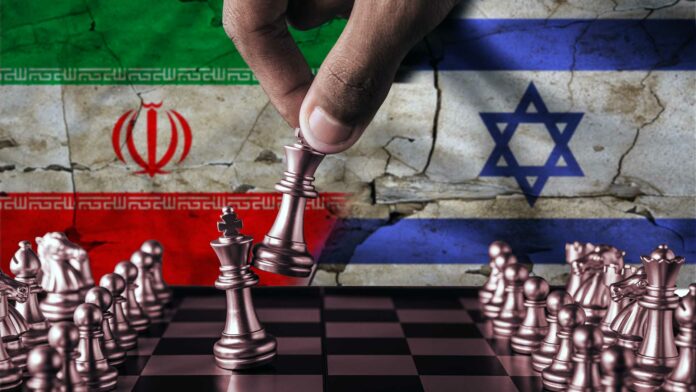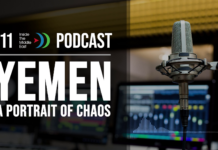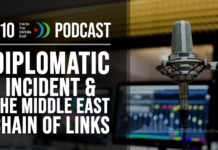|
Getting your Trinity Audio player ready...
|
Iran’s threat to Israel is real. A few hours shuffled the strategic deck. What’s next? | Avi Melamed special to the USA TODAY Network | This article has already published in more that 227 other media and newspapers.
3-minute read
The cornerstone of the Iranian regime’s strategy for the elimination of Israel is its network of proxies — Hezbollah in Lebanon, Iraqi Shi’ite militias, Houthis in Yemen, and Hamas and Islamic Jihad in the Gaza Strip. The mission the Islamic Republic tasks these militias with is to wage a war of attrition against Israel. The strategy aims to gradually weaken Israel and eventually destroy it through executing a coordinated, multifront assault attack. All the while, the Iranian regime and its key assets remain shielded from direct retaliation. So far, the plan has served the Iranian regime well. And from its perspective, the plan has been progressing in the right direction.
Recent events, however, have dramatically altered the strategic landscape. The elimination of Fuad Shukr, Hezbollah’s strategic military leader, and considered the second-in-command followed a few hours later by the assassination of Hamas’ political bureau chief Ismail Haniyeh in Tehran has reshuffled the deck regarding the Iranian threat to Israel. These high-profile killings have forced the Iranian regime into a difficult position, presenting two major dilemmas that require immediate decisions.
Iran now faces a major decision on how Hezbollah should respond to the recent Israeli strike in its stronghold of al-Dahiya, Beirut’s southern suburbs and the operation center of Hezbollah. If Hezbollah retaliates by targeting major Israeli cities like Haifa or Tel Aviv, and causes significant damage to civilian lives and essential infrastructure, that could trigger a full-scale war. Iran wants to avoid this scenario for two main reasons:
First dilemma: Hezbollah’s response
- Lebanon: A full-scale war could push Lebanon, already teetering on the edge of collapse, toward total disintegration. This would be detrimental to Iran, as Lebanon which is a façade state, effectively controlled by Iran and Hezbollah, is a vital foothold for both Iran and Hezbollah, serving as a base to extend their regional influence.
- Hezbollah’s: A full-scale war that severely damages Hezbollah would severely weaken Iran’s most important and central proxy. For Tehran, Hezbollah has two primary missions: maintaining and entrenching Iranian control in Lebanon which also secures Iran’s foothold on the Mediterranean coast and deterring attacks on Iranian assets. Iran has resigned itself to the damage its Gaza proxy, Hamas has suffered, but it cannot afford to lose its most important proxy, Hezbollah. A full-scale war that would severely impact Hezbollah might even force Iran into a direct military confrontation with Israel, potentially escalating into a wider conflict involving the U.S.
Second dilemma: Direct retaliation against Israel
The Iranian regime must also decide whether to directly retaliate against Israel for the assassination of Haniyeh in Tehran, even though Israel has not claimed responsibility. This situation parallels Iran’s response on April 13-14, when it retaliated for the killing of senior Revolutionary Guard officers in Damascus, allegedly by Israel.
Iran’s considerations include:
- Previous retaliation failure: The Iranian attack in April was largely thwarted by a U.S.-led coalition. Despite Israel’s measured response, the incident caused significant embarrassment for Iran.
- Another Iranian attack on Israel might provoke an even harsher Israeli response.
- Distance and risk: The recent powerful Israeli strike on Yemen’s Hodeida port, which is further from Israel than Iran is, demonstrates Israel’s ability to project power across long distances. This adds to the complexity of any potential Iranian retaliation.
As these words are being written, intense discussions are underway within Iran and with Hezbollah. The pressing issue is not whether an Iranian or proxy response is imminent, but what form it will take and what the outcome will be. The Hezbollah attack that killed Druze children in Majdal Shams on July 27 has already intensified tensions and reshuffled the deck, bringing the region close to a multi-front conflict.
Avi Melamed is a former Israeli intelligence official who went on to serve as deputy and then as senior Arab affairs adviser to Jerusalem Mayors Teddy Kollek and Ehud Olmert, operating as a negotiator during the first and second intifadas. He is the author of “Inside The Middle East | Entering A New Era,” and his latest docuseries, “The Seam Line,” available on the Izzy streaming platform, focuses on Jerusalem’s flashpoints and his work during the intifadas.
Iran’s threat to Israel is real. A few hours shuffled the strategic deck. What’s next? | Avi Melamed special to the USA TODAY Network | This article has already published in more that 227 other media and newspapers.
If you want to have a better understanding of the news and what really drives the unfolding events… Read the latest book of Avi Melamed,
INSIDE THE MIDDLE EAST | ENTERING A NEW ERA, available now >>>
Follow me on Twitter @AviMelamed; Facebook @InsideTheMiddleEast; for more Videos on YouTube https://www.youtube.com/c/AviMelamed
I can always be reached at Av*@********ed.com



